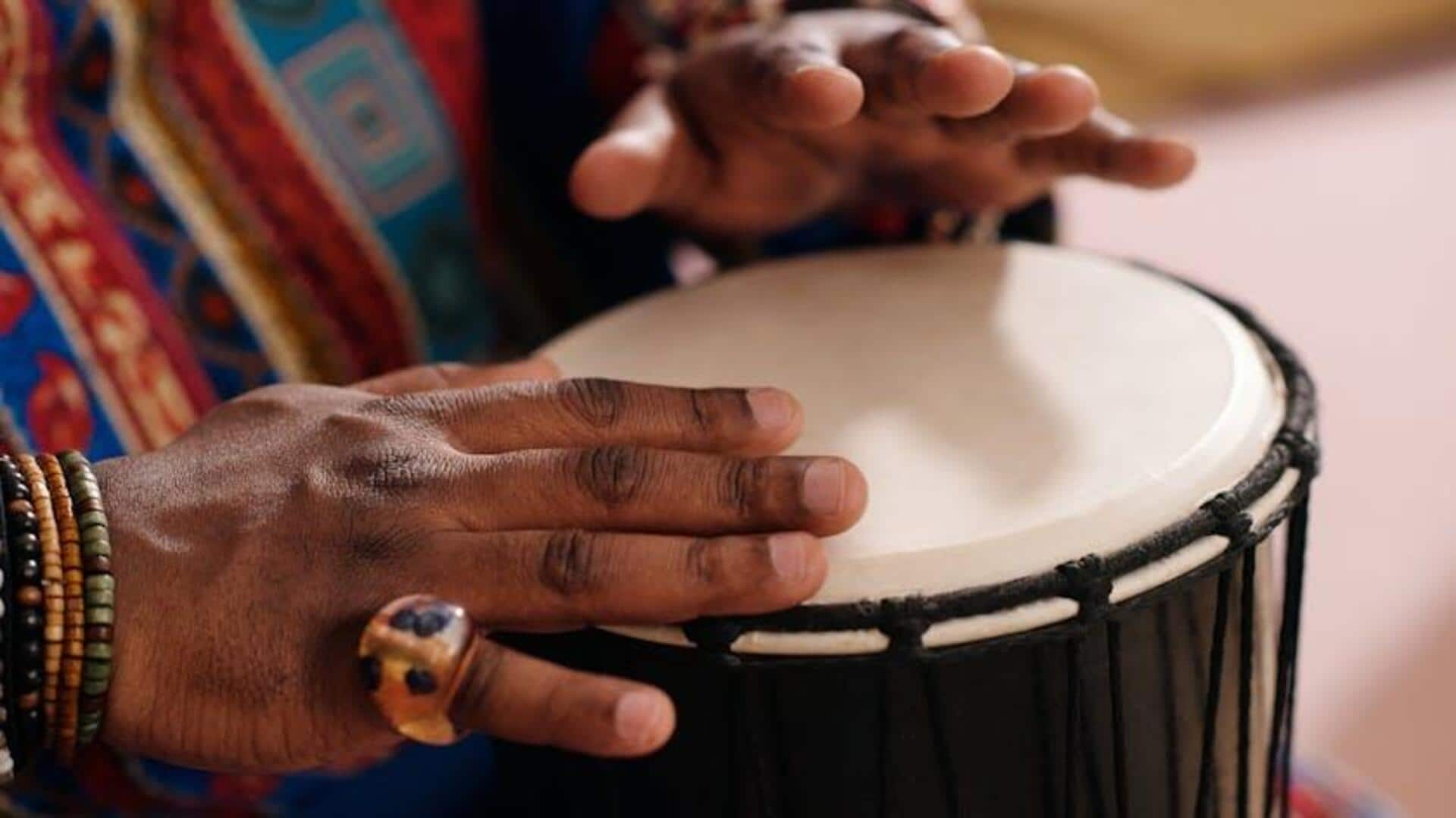
The art of African drum making
What's the story
The art of African drum making, a tradition handed down through generations, is the heartbeat of cultural expression across the continent. This article delves into the world of drum making, detailing the careful selection of materials, the intricate crafting process, and the profound cultural significance of these instruments in African societies. It emphasizes how this ancient craft continues to thrive, echoing the rhythm of Africa's vibrant cultural heritage.
Materials
Selecting the right materials
The first step in African drum making is choosing the right materials. Hardwoods from trees like mahogany and iroko are chosen for their strength and ability to resonate sound. The type of wood used plays a crucial role in the sound quality of the drum. Animal skins, traditionally from goats or cows, are used for the drumhead. These materials are chosen for their flexibility and strength.
Crafting
Traditional crafting techniques
Artisans employ traditional methods, honed over hundreds of years, to carve and hollow the wood into a cylindrical shape. This step is crucial as it sets the base tone of the drum. It requires a lot of expertise. The wood is then allowed to dry before the pre-stretched animal skin head is lashed on with rope or sinew, and tightened to get the right tension.
Significance
Cultural significance and usage
In many African cultures, drums are not just musical instruments. They are vital communication tools used in ceremonies, rituals, and community gatherings. Each rhythm tells a specific story or expresses a particular emotion. So, drum making is not only about crafting an instrument but also about passing down a unique language of rhythms specific to each culture.
Adaptations
Modern adaptations
Although African drum making continues to hold strong to its roots, it has also evolved to keep pace with the modern world. Think innovations like synthetic drumheads that resist the elements, or funky shapes that break tradition for the sake of fresh sounds. These modern twists keep the ancient art alive and kicking in the 21st century, all while paying tribute to its deep history.
Learning
Learning from master craftsmen
If you're keen on learning this craft, there's nothing quite like an apprenticeship with a master craftsman. These masters offer practical experience and knowledge, teaching you not only the techniques but also the cultural importance behind each drum you create. And, it's these mentorships that ensure the tradition continues to thrive in the hands of new craftsmen.